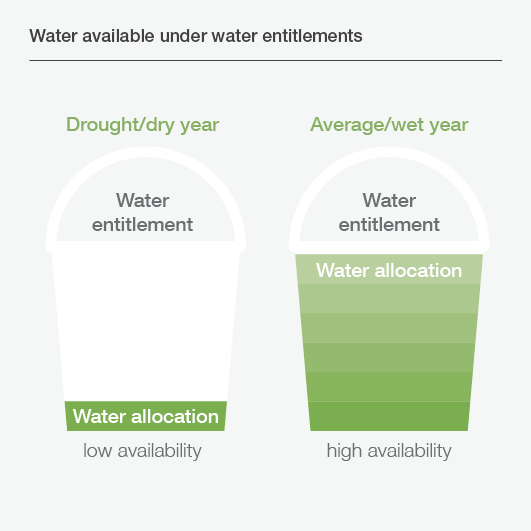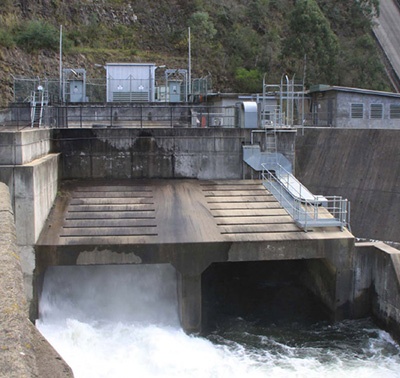A bucket is a good metaphor for environmental water
entitlements that provide a right to access water held in water storages.
The size of the bucket is determined by the entitlement
volume, or the maximum amount of water that can be accessed annually. How the
bucket is filled with water is determined by the rules and conditions of the
entitlement.
In most cases, water available in the entitlement
(bucket) varies from year to year depending on how much water is in storage and
how much it has rained. The 'water available' is often referred to as 'water
allocation'.

Generally, each entitlement (bucket) gets filled with
water (allocation) as more water becomes available in storage.
In many systems, a water corporation (also known as a
storage manager or a resource manager) progressively allocates water to
entitlements throughout the year based on how much water is in storage. In a
dry year, water allocated may be less than the total entitlement volume (the
bucket does not fill). In a wet year, the full volume is likely to be allocated
early (the bucket fills quickly), as the figure above illustrates.
Water allocation to an entitlement could be determined
by a specified share of inflows or
by other defined rules.
An entitlement may have a specified 'reliability',
which indicates how consistently the entitlement (bucket) is filled and the
priority order in which it is filled in any year. For example, in systems like
the Murray, high-reliability entitlements are filled before and more frequently than low-reliability entitlements.
Some environmental water entitlements are not linked
to a water storage and access to water is only permitted on an opportunistic
basis (that is, when water is actually flowing in a river, rather than being
captured in a storage). These entitlements—called unregulated entitlements—permit
diversion of in-river flows above a certain height or rate, or flows that are
in excess of what is needed to supply consumptive uses.

